Heads up – Big Garmin sales are out!!! The Garmin Fenix 8 is $250 off, the Forerunner 965 is $150, the Garmin inReach Mini 2 is $249, and a ton of other Garmin gear has substantial discounts! Go check out the full list here! Plus all the action cam & drone sales here!
I’m DC RAINMAKER…

I swim, bike and run. Then, I come here and write about my adventures. It’s as simple as that. Most of the time. If you’re new around these parts, here’s the long version of my story.

You'll support the site, and get ad-free DCR! Plus, you'll be more awesome. Click above for all the details. Oh, and you can sign-up for the newsletter here!
Here’s how to save!
Wanna save some cash and support the site? These companies help support the site! With Backcountry.com or Competitive Cyclist with either the coupon code DCRAINMAKER for first time users saving 15% on applicable products.
You can also pick-up tons of gear at REI via these links, which is a long-time supporter as well:Alternatively, for everything else on the planet, simply buy your goods from Amazon via the link below and I get a tiny bit back as an Amazon Associate. No cost to you, easy as pie!
You can use the above link for any Amazon country and it (should) automatically redirect to your local Amazon site.
While I don't partner with many companies, there's a few that I love, and support the site. Full details!

Want to compare the features of each product, down to the nitty-gritty? No problem, the product comparison data is constantly updated with new products and new features added to old products!

Wanna create comparison chart graphs just like I do for GPS, heart rate, power meters and more? No problem, here's the platform I use - you can too!

Think my written reviews are deep? You should check out my videos. I take things to a whole new level of interactive depth!

Smart Trainers Buyers Guide: Looking at a smart trainer this winter? I cover all the units to buy (and avoid) for indoor training. The good, the bad, and the ugly.
-
Check out my weekly podcast - with DesFit, which is packed with both gadget and non-gadget goodness!

Get all your awesome DC Rainmaker gear here!
FAQ’s
I have built an extensive list of my most frequently asked questions. Below are the most popular.
- Do you have a privacy policy posted?
- Why haven’t you yet released a review for XYZ product you mentioned months ago?
- Will you test our product before release?
- Are you willing to review or test beta products?
- Which trainer should I buy?
- Which GPS watch should I buy?
- I’m headed to Paris – what do you recommend for training or sightseeing?
- I’m headed to Washington DC – what do you recommend for training?
- I’m from out of the country and will be visiting the US, what’s the best triathlon shop in city XYZ?
- What kind of camera do you use?
-
5 Easy Steps To The Site
In Depth Product Reviews
You probably stumbled upon here looking for a review of a sports gadget. If you’re trying to decide which unit to buy – check out my in-depth reviews section. Some reviews are over 60 pages long when printed out, with hundreds of photos! I aim to leave no stone unturned.
Read My Sports Gadget Recommendations.
Here’s my most recent GPS watch guide here, and cycling GPS computers here. Plus there are smart trainers here, all in these guides cover almost every category of sports gadgets out there. Looking for the equipment I use day-to-day? I also just put together my complete ‘Gear I Use’ equipment list, from swim to bike to run and everything in between (plus a few extra things). And to compliment that, here’s The Girl’s (my wife’s) list. Enjoy, and thanks for stopping by!
Have some fun in the travel section.
I travel a fair bit, both for work and for fun. Here’s a bunch of random trip reports and daily trip-logs that I’ve put together and posted. I’ve sorted it all by world geography, in an attempt to make it easy to figure out where I’ve been.
My Photography Gear: The Cameras/Drones/Action Cams I Use Daily
The most common question I receive outside of the “what’s the best GPS watch for me” variant, are photography-esq based. So in efforts to combat the amount of emails I need to sort through on a daily basis, I’ve complied this “My Photography Gear” post for your curious minds (including drones & action cams!)! It’s a nice break from the day-to-day sports-tech talk, and I hope you get something out of it!
The Swim/Bike/Run Gear I Use List
Many readers stumble into my website in search of information on the latest and greatest sports tech products. But at the end of the day, you might just be wondering “What does Ray use when not testing new products?”. So here is the most up to date list of products I like and fit the bill for me and my training needs best! DC Rainmaker 2024 swim, bike, run, and general gear list. But wait, are you a female and feel like these things might not apply to you? If that’s the case (but certainly not saying my choices aren’t good for women), and you just want to see a different gear junkies “picks”, check out The Girl’s Gear Guide too.












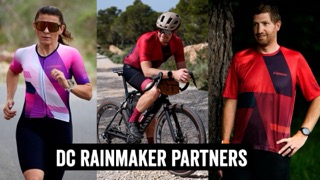
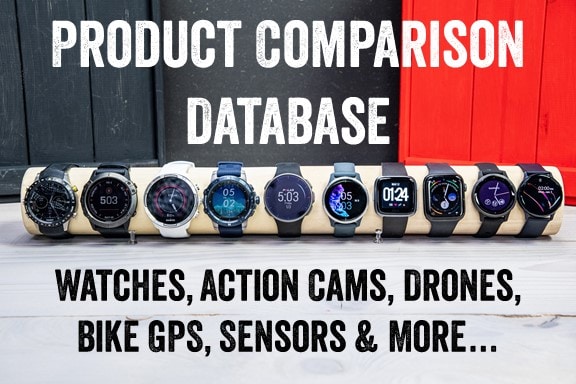
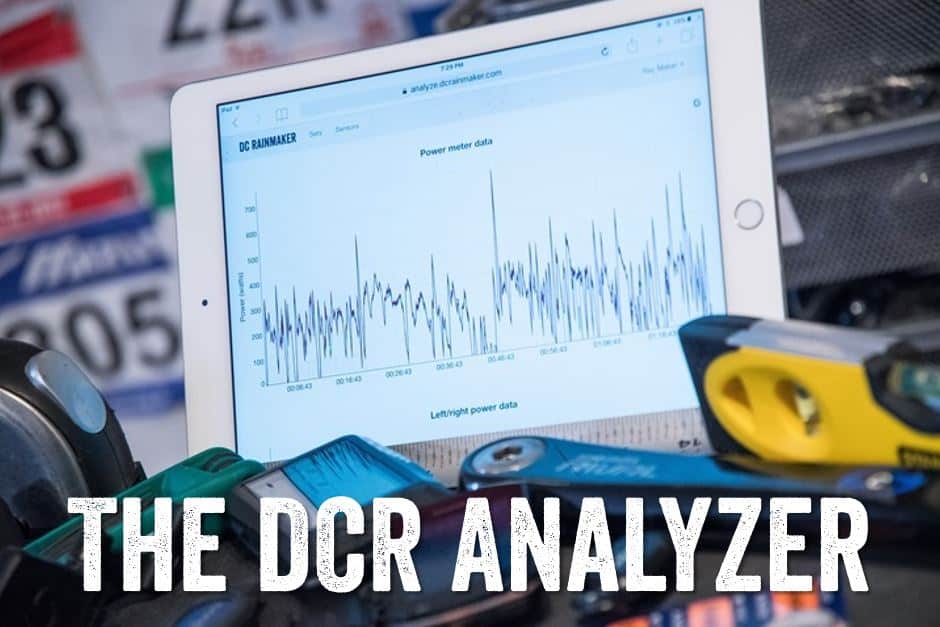


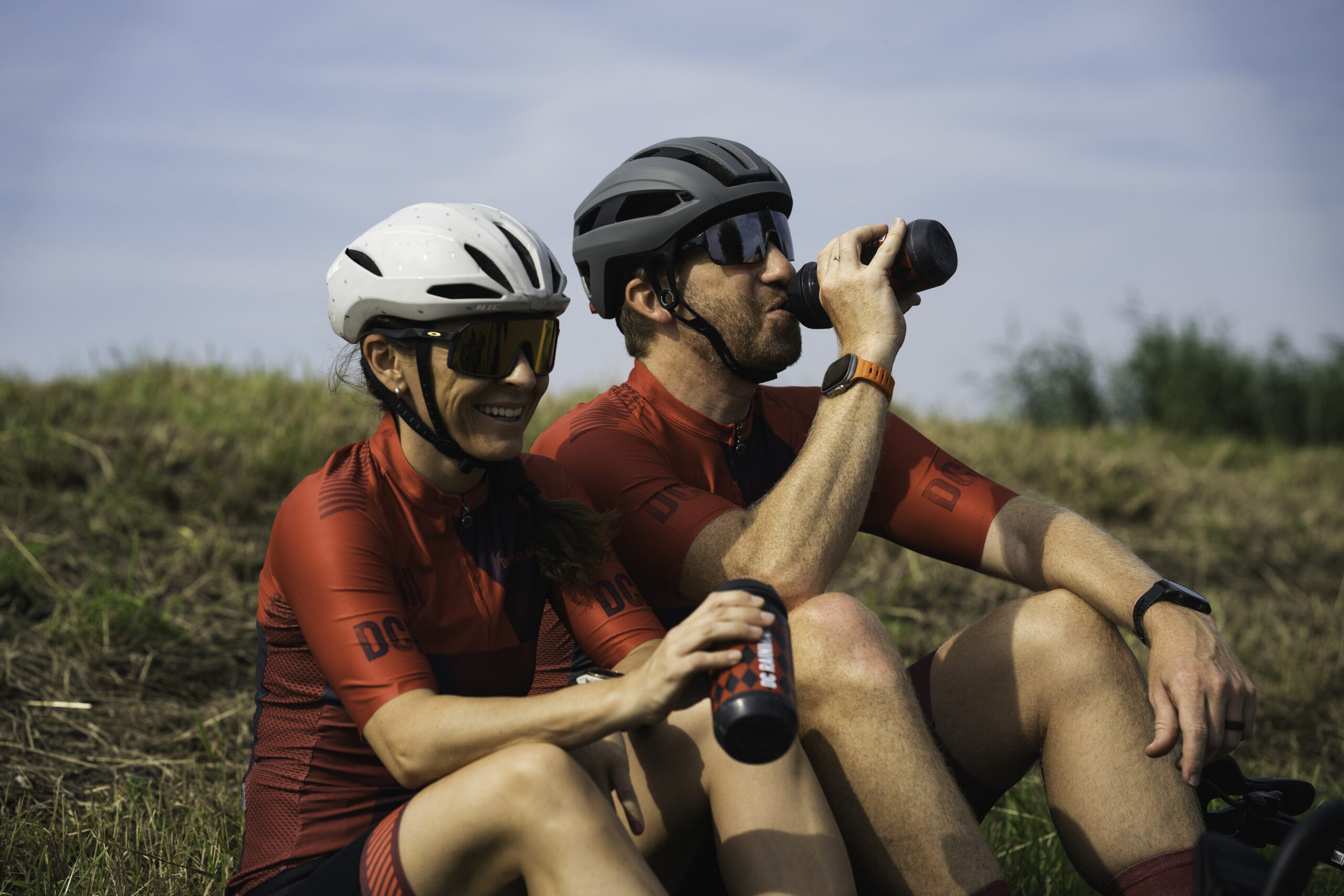
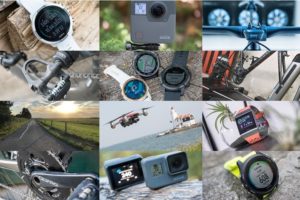




Why is that Strava seems to habitually alienate their user base and beat the hand that feeds them?
Because the hand that feeds the leadership team isn’t Strava users, but a group of VC orgs who apparently want out (IPO preparations).
If at some v earlier time they told VC that they still have some hidden ace up their sleeve they’ll play it when put under pressure, even if fully knowing that it’s actually a dud. Given a choice between preventing harm to the company (by admitting that the hidden card isn’t actually that good and not playing) and being replaced a few months later than sooner, they’ll always pick the latter, a few more months of very well paid employment.
If I were Garmin, I would now unlock the ability to add activities to Garmin Connect from all companies. I miss uploading from Wahoo. And Strava will no longer be needed. We’ll meet at Garmin Connect. But Garmin is also like a wall. Everyone sticks to their guns, and that doesn’t help at all.
You can upload from anything to Garmin with RunGap
They would also have to open up their API instead of limiting it to “approved business developers” only.
But yeah, if they did that and allow VeloViewer, StatsHunters etc. to fetch my data then 70% of the reason for using (and paying) Strava would be gone for me.
Whilst you may be able to transfer your data to Garmin via RunGap, Garmin doesn’t do anything with that data besides display it. It affects none of their Garmin Coach plans or things like recovery time, which are meant to be adjusted based on your training load and other indicators like stress and sleep.
For instance, if you cross train using another device (let’s say you have a Garmin watch and a Wahoo bike computer) the sync’d Wahoo cycling doesn’t change the recommendations for the Garmin Coach running plan (or vice versa if you have a Garmin bike computer and off brand watch).
Watches like the Forerunner were revolutionary because each day the watch gives you a suggested run (or rest) activity based on a holistic view of your training load and wellness indicators. That breaks when you use another device outside of the Garmin ecosystem. It even breaks from one watch to another. Garmin can’t even sync basic data if you own two Garmin watches; they have many aesthetic smart watches, and many sports-but-ugly watches. They can’t use data such as sleep metrics from both watches to inform an accurate body battery, which feeds into their training recommendations. This is one example, but their own ecosystem is broken between devices on many levels.
I really wish these companies would focus on usability instead of focussing on who has which patent. They are ultimately wasting their resources when they could be fixing glaring faults in their app and device usability.
Data is useless unless it serves a purpose in my day to day training.
“Watches like the Forerunner were revolutionary because each day the watch gives you a suggested run (or rest) activity based on a holistic view of your training load and wellness indicators. That breaks when you use another device outside of the Garmin ecosystem. It even breaks from one watch to another. Garmin can’t even sync basic data if you own two Garmin watches; they have many aesthetic smart watches, and many sports-but-ugly watches. They can’t use data such as sleep metrics from both watches to inform an accurate body battery, which feeds into their training recommendations. This is one example, but their own ecosystem is broken between devices on many levels.”
This hasn’t been true for a few years (and longer depending on which exact feature you’re talking about). You can mix and match watches without any issue, within the Garmin ecosystem.
That’s great news for recently purchased devices but it doesn’t work for mine, Garmin support has said to pick a “main watch” and sleep data will only be informed from that device.
However, I went off track on my original point in replying to this…
Across brands, using RunGap to send a ride to Garmin only displays it on the Connect app, it doesn’t actually help in any way if you have an ongoing Garmin Coach plan. Garmin Support’s advice to me was to record my cycling twice, using both the Wahoo and Garmin watch at the same time, which is a bit bonkers as they get all the data they need, and more, from the Wahoo head unit. I also would look like a real nutter having to stop the watch and start it when we set off or stop at coffee stops etc when I have a head unit on my bike, and having the added pain of duplicated ride data in other apps and manually having to delete them if I don’t want the other app data skewed.
Hi. I don’t think so, Ray. As being owner of a 2nd generation Epix and an Instinct 2X, my two watches (very similar devices with same HR sensor) never agree on the daily running recommendation, for example. Garmin has a LOT of room for improvement when it comes to multiple Garmin devices within its own ecosystem.
RE: Rungap
The simple answer there is Rungap isn’t doing anything supported (cause Garmin doesn’t allow most 3rd party devices/platforms to upload to it, only Zwift/TrainerRoad/Tacx). In short, the RunGap upload is literally a hacked workaround, and unfortunately, it works as such.
RE: Same daily suggestions
I generally see pretty similiar suggestions from devices, assuming they are both showing the same/current updated stats. How different are we talking?
Don’t get me wrong, there’s tiny little quirks left, but realistically, nobody else does it better either (or anywhere near as close).
It would certainly be fascinating to be able to import all sorts of physiological parameters into connect and draw conclusions for your training. The problem here may be that it is quite easy to get into a garbage in garbage out situation… Garmin probably knows quite well about their devices accuracy and data integrity. But once you import data that you cannot check for plausibility and reliability the conclusions you draw may be totally wrong. Imagine an inaccurate third party heart rate monitor and bike computer leading to wrong training loads being imported into connect. Or a metabolic cart that has been wrongly calibrated delivering wrong VO2 max values etc… Again, having data in one application would be great but then data integrity has to be insured across all devices used.
My main concern across two Garmin watches is that only one records sleep data at all (the “main” watch selected in Connect) even though they both have sleep recording functionality. They’re both classed as Garmin sports watches, one is merely prettier for day-out wear, and the other looks like a proper sports watch. So each night I need to remember to make sure the primary watch is on in order to record sleep data, so that sleep data informs the recommendations correctly on my Forerunner. It’s a pain in the butt, especially when travelling. If I want to change the primary watch, all previous sleep data is erased, and I start getting odd recommendations.
The other niggles annoy rather than infuriate, but missing sleep data when both watches record sleep data in the exact same way, and sync to the same app, seems like bare basics.
Dan brings up an excellent point here. I’ve moved to the Fenix 7 Pro for the updated sensors, specifically for sleep tracking (as I’m fighting mild obstructive sleep apnea). My Fenix 6 had no pulse ox, and my Edge, of course, can’t track sleep. In prior generations the watch and bike computer gave radically different training recommendations, but this hasn’t been the case for a long time now… Garmin Connect was even designed to be their cloud aggregator. Just like AI, though, data accuracy is most important because errors are easily amplified. Your primary wearable, of course, should be set as the most accurate and capable one you own (not the pretty one – I wear a smartwatch on my other wrist for phone/text capabilities while I do kitesurf down-winders or wing-foil, etc. – it has just about everything else configured to off, including GPS).
@ray – when Garmin launched their initial ‘heatmaps’ in 2013, as you point out at ~5:25 of the video, were those actually illustrating multi-user activity (ie route popularity – routes that were heavily travelled)? or were those heat signatures of a single user’s pace or HR or something else at all the points on the route?. The screenshot you showed looked more like a pace map, and not a heat map of how many athletes had been on the route. There’s a big difference. Just wanted to make sure you’re comparing apples to apples.
It showed which areas were most popular from multi-device uploads.
You can actually read the original announcement here: link to web.archive.org
When will you discuss Suunto’s entry into this lawsuit?
Seems like they have a pretty valid claim.
I’ve been digging into it.
It’s quite a bit messier than the Strava one, and is honestly framed quite a bit differently. Suunto’s lawsuit (in every possible way), reads like more of a payday attempt, than whatever the heck Strava thinks they’re doing. Especially given the district they filed it in, and the firm they’re using, etc…
It’s also much more complex technically. Whether or not it’s true is really hard to know from an outsider perspective. Like the Strava one though, it’s also risky that Garmin doesn’t countersue. Especially since Garmin unquestionably has many many many more sports-related patents than Suunto has, and undoubtedly Suunto violates some of them.
Up till now, most of the sports tech companies have lived in a relatively peaceful state. Nobody sueing anyone, because if anyone starts, all of them start on each other. As one patent lawyer I talked to said, it was effectively ‘mutually assured destruction’. We’ve seen the same thing with Apple/Samsung at times, though less so lately. All of them know they violate some patents that others hold (setting aside whether or not these patents should have ever been issued).
Point being, it’s messier, is on my plate, but I’m trying not to get too distracted and getting some actual reviews out instead.
NOKIA was the FIRST! Have you forgotten already? The Nokia Sports Tracker, for Symbian, was the first to have heatmaps. Today, the same is available in the Sports Tracker. Nokia was ages ago, but @DCR should remember.
As much as I like it, I can do without Strava (premium user) given the choice. I am very happy to keep using my Garmin Forerunner 955 and Edge 840. Strava doesn’t even do Multisport activities such as Duathlons, which Garmin Connect does very well. I have used 2 Wahoo devices over the last couple of years but went back to Garmin. I suspect that with the IPO Strava are positioning themselves to launch their own devices.
Out of curiosity, how are multisport events handled on fit file level? Could you shed some light here, Ray?
Is it still 3 (or 5,incl transitions) fit files and just merged in garmin connect? Or is it one big file?
Could it be handled the same way in strava or does the information about it being a multisport event never leaving the garmin world?
Honestly, how it is shown in garmin connect is just so much better…
On my Forerunner 955, a multisport activity just one big FIT file with multiple sessions – each session represents either a leg or transition.
It’s actually the same on my old FR935, which was released 8 years ago.
(I just tested this by recording a couple of very short multisport activities on my watches. Sadly I actually only run, so I don’t know if a real-world tri would somehow generate multiple FIT files where a short multisport activity would not.)
I don’t know the details of the Garmin API, but I do know that services like Strava and Runalyze receive the original FIT file, since they’re able to export it (and it’s identical to the FIT file recorded by the watch).
Assuming that a real tri would also be in a single FIT file, I can only assume that it’s a deliberate choice to show each leg and transition of a multisport activity as a separate activity, rather than any kind of technical limitation (i.e. it’s not due to lack of data from Garmin’s end, as far as I can tell).
But even in the case of multiple files (which I haven’t seen), Garmin obviously has a way to correlate all of them with a single multisport activity, and I would be surprised if they omitted any information that would allow 3rd parties to do so as well.
Strava’s official comment is that they don’t currently support multisport activities:
link to communityhub.strava.com
Further discussion here:
(login required) link to communityhub.strava.com
I don’t *think* anyone is saying that the lack of multisport support in Strava is due to a technical limitation on Garmin’s end.
> I don’t know the details of the Garmin API, but I do know that services like Strava and Runalyze receive the original FIT file, since they’re able to export it (and it’s identical to the FIT file recorded by the watch).
For example, even though a multisport activity shows up as multiple activities in runalyze and strava, in both of those platforms, if I export the original FIT file from any of the multiple activities, I obviously just get the single original FIT file back.
I checked my last tri on Garmin connect, it downloads as one fit file. I just wasn’t sure whether it comes that way from the watch or is changed afterwards.
But understood, apparently it is just Strava being to lazy to implement it…
What’s funny about the whole triathlon thing on Strava is that it’s literally more work to break it out into the 5 chunks it does today (Swim/T1/Bike/T2/Run), versus just reading the singular .FIT file.
Sure, there’s some UI work, but people have been asking for this for a decade. And that’s before we account for duathlon people, and those wonky swim-run people (I could however, see how Strava would draw a line at the enumeration of that craziness).
It comes from the watch that way. This can be seen by connecting the watch to a computer via the usb charging cable and using File Explorer (Windows) or OpenMTP (Mac) to look at the \Garmin\Activity (or Activities\) folder, where all the FIT files are stored.
Typically Connect doesn’t modify the original FIT file. Which does mean that certain changes/added information in Connect (like weather, elevation corrections or the auto-generated activity name) are not in the FIT file, either. (The Connect activity name *is* available via the Garmin API, and it can be seen in runalyze, but not Strava).
> What’s funny about the whole triathlon thing on Strava is that it’s literally more work to break it out into the 5 chunks it does today (Swim/T1/Bike/T2/Run), versus just reading the singular .FIT file.
I’m ambivalent on this.The work on the FIT parsing end would have to be done regardless of whether a multisport activity is presented in the UI as a single activity (or a group of activities) or as separate activities. But presenting it as separate activities is far less work on the UI end (probably literally no additional work). I know you mentioned the UI work already, but I think there’s a bit more reluctance to do additional UI work compared to work that the user doesn’t see, because user facing changes tend to generate more controversy than non-user facing changes.
It’s clear that in Strava, the same FIT file is being used for each of the separate chunks (which you can see if you press Export Original on each chunk in the strava website). I don’t think Strava has to literally break the file into multiple parts (although that wouldn’t be so hard), it just has to specify a session index into the FIT file for each chunk. (A multisport FIT file contains multiple sessions, as opposed to most activities which only have 1 session.) Of course, if they generate their own file format that we don’t see, it could indeed only contain the data needed for that chunk. But I don’t think it matters either way.
What I’m saying is I don’t think the parsing part isn’t really significantly easier or harder based on the choice of presenting a multisport activity as 1 activity (or group of activities) vs multiple distinct activities.
Going back to the UI stuff, users couldn’t care less how things work under the covers (like parsing of FIT files, and whether a tri really is multiple FIT files or a single FIT file), but they will sure have an opinion about how a triathlon should be presented in the UI. Check out the 2nd communityhub dot strava dot com link I posted above, where there’s a super long discussion with people’s thoughts on the subject.
Having said all that, I agree that it’s kind of ridiculous that Strava hasn’t implemented this feature in 16 years.
For example, runalyze dot com also presents a multisport activity as separate activities (and not as a group)
You’d think if it was truly easier to just display a multisport activity as one activity, then a (mostly) free 3rd party website would take that route.
I think the bulk of the work is on the UI end to be frank.
I tried for years to volunteer my expertise with Strava, specifically to improve the way they display wind-sports data. There are a TON of folks using it for windsurfing, kitesurfing, downwind foiling, surfing, etc… and we don’t measure things in nautical miles like sailors do. 🙄 I have an acquaintance who interviewed as CEO there who’s a multi-sport athlete (and highly seasoned executive who launched and sold his own lifestyle startup) who’d have made a much better leader than what they have now (and likely wouldn’t have sued Garmin). I got rid of my paid Strava subscription once intervals.icu synced directly with Connect, as Strava also can’t import weight or blood pressure data (or grip strength, which I’ve been begging Garmin to develop). One thing I recommend for people who are curious is download the ConnectIQ SDK and study the latest FIT file format header and code – it’s key to understanding how the entire ecosystem works.
Suunto doesn’t want to miss the party: they are suing Garmin, too.
(in Finnish)
link to puhelinvertailu.com
A simple patent search regarding infringement statute of limitations suggest six years from initial filing of patent to defend it
…except, in this case, Strava is saying Garmin is still infringing on the patents as of today, and thus, the 6-year counter hasn’t even started yet.
My very “I’m not a lawyer “ understanding is:
Quote- The clock starts ticking on the statute of limitations when the cause of action arises. This typically occurs when the patent holder becomes aware or should have become aware of the infringement.
Factors that can trigger this awareness include the infringing activity itself, public announcements, sales of infringing products, or notification from third parties.
Ref: source ttconsultants.com